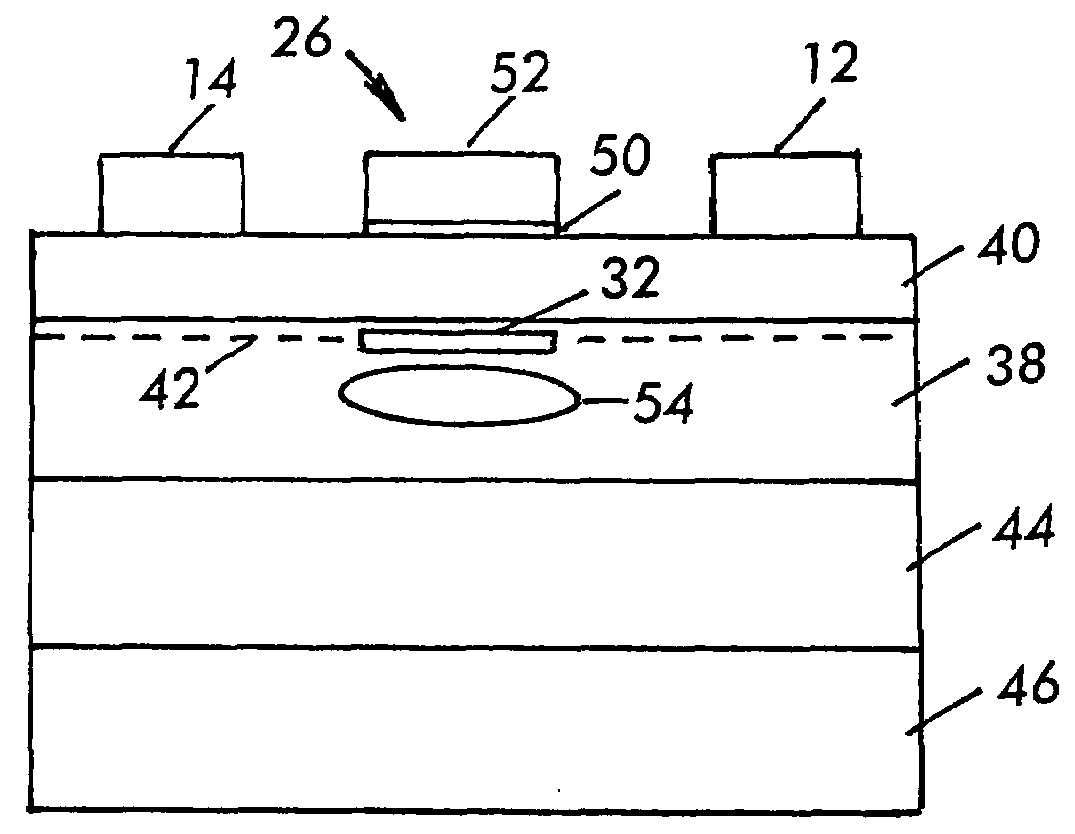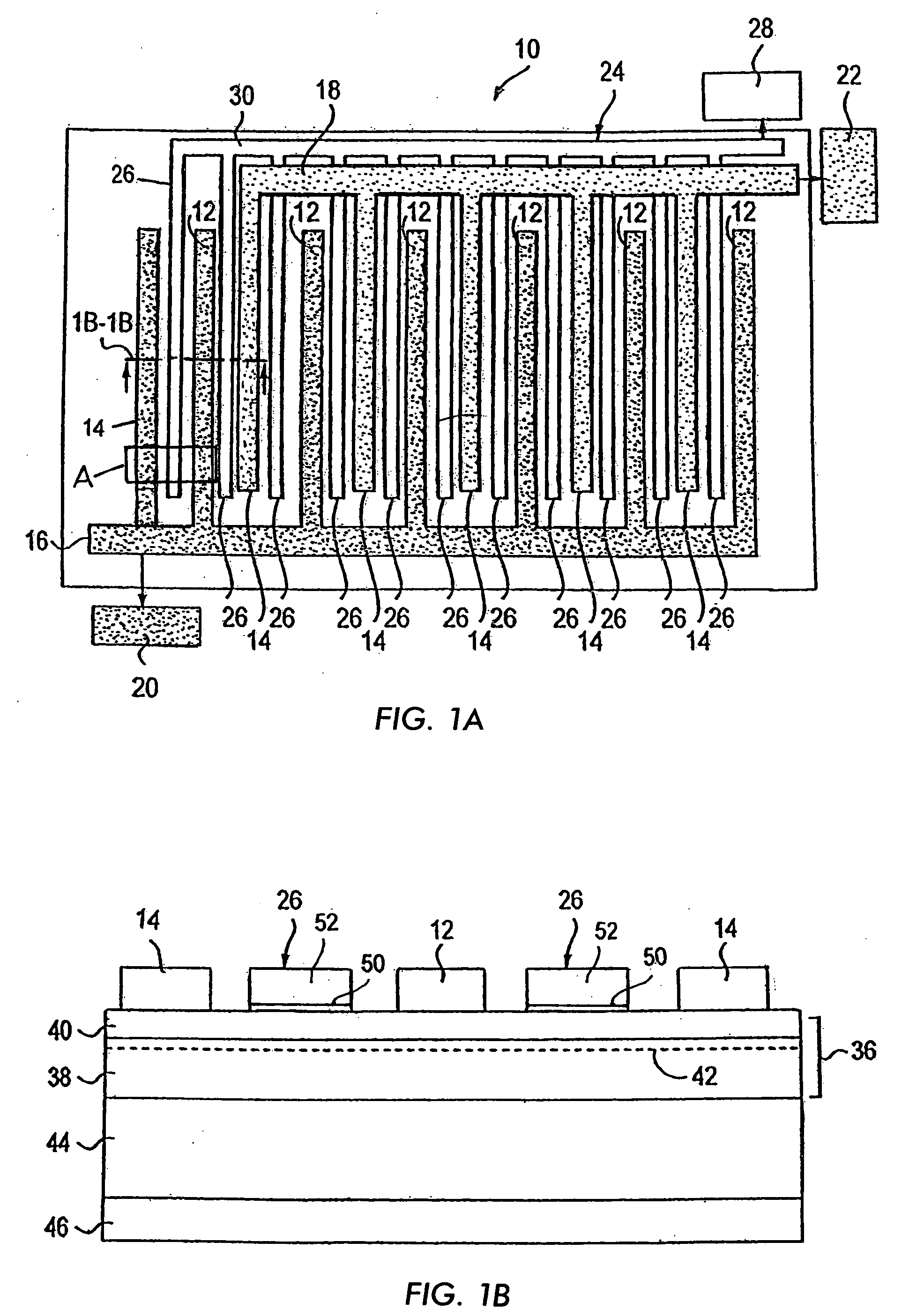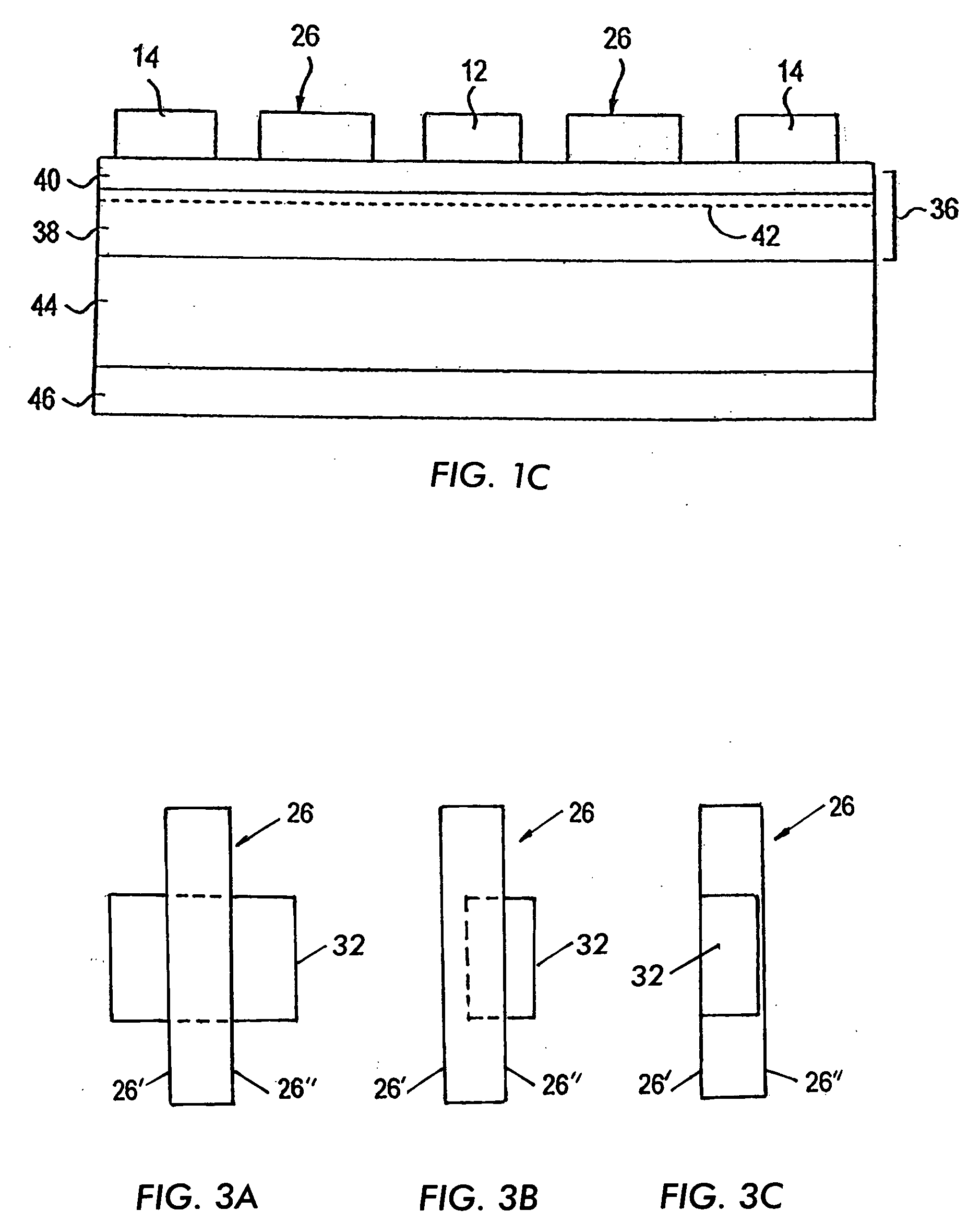III-nitride heterojunction device
a heterojunction device and nitride technology, applied in the field of semiconductor devices, can solve the problems of large losses associated with resistance, large losses associated with charge, qg, qgd, etc., and achieve the effects of reducing the charge under the gate, reducing the gate area, and reducing the charg
- Summary
- Abstract
- Description
- Claims
- Application Information
AI Technical Summary
Benefits of technology
Problems solved by technology
Method used
Image
Examples
first embodiment
[0016]Referring to FIGS. 1A-1B, a power semiconductor device according to the present invention is a III-nitride based metal, insulator heterojunction field effect transistor (MISHFET) 10, which includes a plurality of first power electrodes (drain electrodes) 12, and a plurality of second power electrodes (source electrodes) 14 arranged in an interdigitated pattern. Drain electrodes 12 are electrically connected to one another by a respective drain feed 16 and source electrodes 14 are electrically connected to one another by a respective source feed 18. Drain feed 16 is also electrically connected to a first power pad (drain pad) 20 and source feed 18 is electrically connected to a second power pad (source pad) 22. Drain pad 20 and source pad 22 are located somewhere on the die and are used for external power connection.
[0017]Device 10 according to the first embodiment further includes a gate structure 24. Gate structure 24 includes a plurality of gate fingers 26 each disposed betw...
second embodiment
[0024]Referring now to FIG. 3A, in the present invention, at least one of the interrupted regions 32 may be wider than the width of and overlying gate finger 26. Thus, as illustrated by FIG. 3A, an interrupted region 32 can extend laterally beyond the lateral sides 26′, 26″ of a gate finger 26 that is disposed over the interrupted region 32.
[0025]Referring to FIG. 3B, in a third embodiment, an interrupted region 32 may extend only partially under a respective gate finger 26, while extending laterally beyond one of the lateral sides (e.g. side 26″) of the overlying gate finger 26. Referring to FIG. 3C, in a fourth embodiment of the present invention, an interrupted region 32 may extend only partially under a gate finger 26, but does not laterally extend beyond a lateral side (e.g. side 26′) of the overlying gate finger 26.
[0026]In any one of the embodiments disclosed herein, an interrupted region 32 may be formed by a recess 34 that partially extends through second III-nitride semico...
PUM
 Login to View More
Login to View More Abstract
Description
Claims
Application Information
 Login to View More
Login to View More - R&D
- Intellectual Property
- Life Sciences
- Materials
- Tech Scout
- Unparalleled Data Quality
- Higher Quality Content
- 60% Fewer Hallucinations
Browse by: Latest US Patents, China's latest patents, Technical Efficacy Thesaurus, Application Domain, Technology Topic, Popular Technical Reports.
© 2025 PatSnap. All rights reserved.Legal|Privacy policy|Modern Slavery Act Transparency Statement|Sitemap|About US| Contact US: help@patsnap.com



